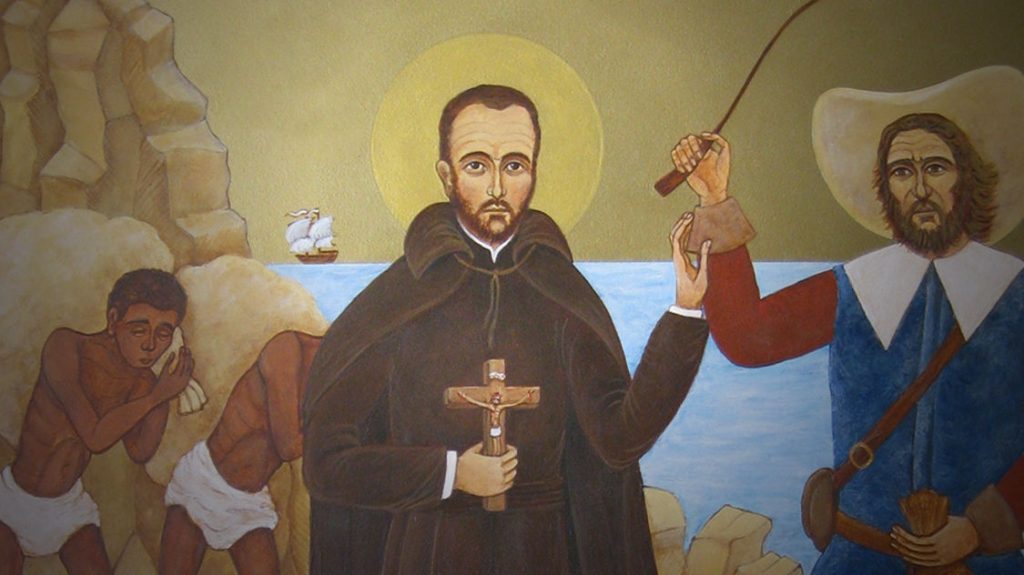St. Peter Claver was born into a farming family in Catalonia, Spain, in 1581. He studied at the University of Barcelona, and joined the Jesuits when he was 20.
While studying philosophy in Tarragona, Peter became friends with an older Jesuit lay brother, Alphonsus Rodriguez. Alphonsus worked as a door-keeper, but had immense spiritual insights, and encouraged Peter to become a missionary in the Spanish colonies. Almost two centuries later, Pope Leo XIII canonized both Alphonsus and Peter on the same day.
In 1610, Peter was sent as a priest to Cartagena, a port city in what is now Colombia. His goal was to fight the common European practice of importing African slaves to work in plantations and mines. Peter was determined to sacrifice his own freedom to help the slaves and bring them to salvation, vowing to become “the slave of the blacks forever.”
Many Spanish royal officials appreciated Peter’s work, and contributed to the slaves’ relief and religious education. The slave traders found Peter to be a nuisance.
Peter often employed pectoral representations of Catholic truths to overcome the language barriers he faced. He communicated through expressions of generosity and love, giving food and drink to workers, and blessing them in illness. In keeping with his vow of slavery, Peter survived on little food and sleep. He was known for miraculous occurrences — he healed the sick with a touch of his cloak, and was seen surrounded by a supernatural light when he visited hospitals.
On September 8, 1654, St. Peter died. In 40 years in Cartagena, he had baptized and taught the faith to over 300,000 slaves.

